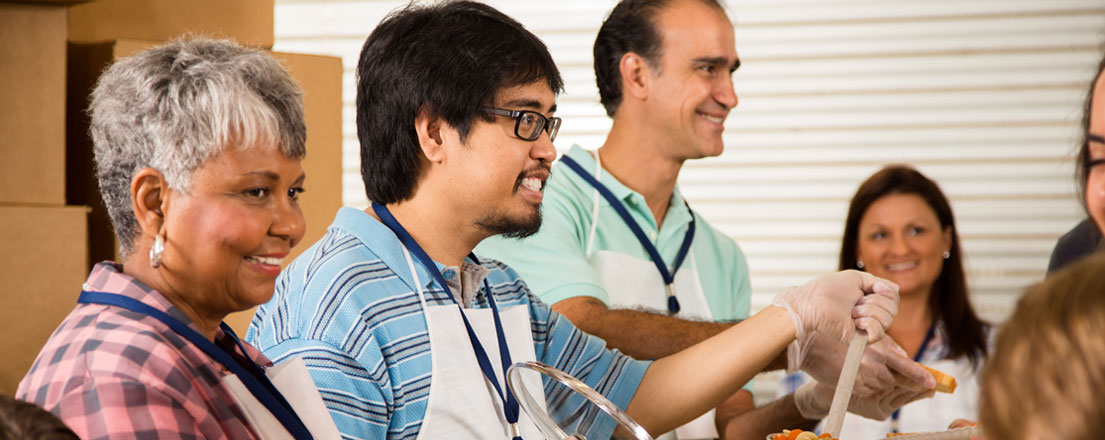
Volunteering: Good for the Community, Good For You
Detroit resident Jennie Weakley couldn't get into her shed for many years, thanks to a broken lock. When she was ready to tackle the shed, she needed help, so she posted on the Unity in Our Community TimeBank.
There are lots of organized volunteer opportunities for those who want to give back. But TimeBank offers a less-structured method called “do-good bartering.”
Here’s how it works:
TimeBank members earn hours by volunteering. Then, they can redeem those hours for goods or services. In Weakley’s case, a high school teacher volunteered his time to help her. After seeing him in action, another neighbor joined TimeBank and offered violin lessons to an 11-year-old. That girl, in turn, shoveled snow for an elderly neighbor, who paid back TimeBank by reading to kids at an early youth education program.
It’s “pay it forward” activism at its finest with volunteer networks that don’t get a lot of recognition fueling good deeds all across the country.
The global charity work of billionaires such as Bill Gates and Mark Zuckerberg get the headlines, but people with less notoriety can make an impact locally and regionally, too. A 2014 report by Volunteering and Civic Life in America shows that:
- One in four Americans volunteered through an organization
- Three out of every five helped their neighbors
Spontaneous service
Many people think of community service as structured programs, but some experts see giving back as more impromptu.
“It’s an interesting and valuable thing – and a change from the past – that people see something happen and spontaneously want to help,” says Ginna Holmes, executive director of the Michigan Community Service Commission in Lansing. “They don’t walk away.”
In Michigan alone, the MCSC estimates that 87 percent of all residents participate in informal volunteering, with an economic value of $5.7 billion.
Although quantifying service is a helpful way to measure volunteer impact, Holmes believes its true value is more subtle.
“When we see the impact of these small things and hear those stories, it inspires us to be more connected to our community,” Holmes says. “It’s the idea that you know and care about each other. That humanity gives our lives meaning.”
Formal and informal service
Weakley – who is both a member and the Unity In Our Community TimeBank coordinator – believes that this alternative volunteer exchange helps more people engage in unexpected ways.
“We don’t even look at it as volunteerism. We look at it as community building,” she says. “It helps people start giving to each other and makes them realize that everyone has something to give, no matter their skills. You give what you are good at.”
Both formal and informal ways to give back have their place, Weakley knows. She’s also the volunteer program coordinator at Bridging Communities, a Detroit-area organization. Bridging Communities began as a way to help community members visit and help older people who want to continue living independently in their homes. They provide food, home repairs and transportation – important to isolated local seniors, who face a 48 percent higher death rate than their suburban counterparts.
The community engagement that’s so important to TimeBank is also essential to groups such as Bridging Communities. http://www.bridgingcommunities.org/ Leaders at Bridging Communities
leaders turned their focus to an underused group: young people.
They began to engage them and teach them about older members of their community and neighborhood issues.
“All these generations wouldn’t seem to have anything in common, but intergenerational programming has become a way to help reach our mission,” Weakley says. “We take a wraparound approach. We’re helping teens build relationships with elders on the block and helping the elderly be less scared of the youth in their community.”
The result is an ever-growing web of connections: A teacher unlocks a shed, which eventually leads to a little kid learning to read.
“There’s a philosophy that it’s really important to volunteer not at people, but with them,” Holmes says. “You can only be as strong as those around you. Government cannot do it all. Organizations cannot do it all. It’s going to take each of us as community members to stand up and care. We have this potpourri of cultures and belief systems, and when we join together, we change lives.”
HAP has been giving back to our community for more than 50 years. Here’s one example. ![]()
Each year in mid-April, more than 100 HAP employees take part in the annual National Employee Volunteer Day. This past year, they spent the day working at organizations like:
- Habitat for Humanity, dedicated to building homes and communities for the disadvantaged
- The Fur Angels, a pet therapy service
- Forgotten Harvest, a group that collects surplus food and donates it to emergency food providers in metro Detroit
Last year alone, HAP volunteers donated more than 600 hours in community service. Learn more at HAP Community Outreach
References
Johns Hopkins study “Evidence for Neurocognitive Plasticity in At-Risk Older Adults: The Experience Corps Program”, 2009
